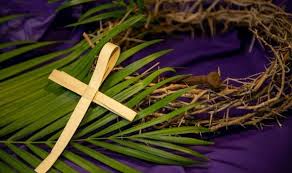
St. Patrick’s Day, celebrated annually on March 17th, is a global phenomenon that brings people together to honor Irish culture and its rich traditions. What began as a religious feast day in honor of Ireland’s patron saint has grown into a grand celebration, particularly in countries with large Irish immigrant communities, like the United States, Canada, and Australia. The day is now associated with parades, music, wearing green, and a general air of festivity.
But beyond the festivities, what is the true meaning of St. Patrick’s Day, and why has it become such a significant event worldwide?
The Origins of St. Patrick’s Day
The day is named after St. Patrick, the patron saint of Ireland, who is credited with bringing Christianity to the island in the 5th century. Born in Roman Britain, St. Patrick was captured by Irish pirates at the age of 16 and taken to Ireland as a slave. After six years of servitude, he escaped and returned to his family. However, after a vision in which he was called to return to Ireland as a missionary, Patrick became a priest and later a bishop.
St. Patrick spent much of his life converting the pagan Irish to Christianity and is said to have used the shamrock, a three-leaved plant, to explain the concept of the Holy Trinity (Father, Son, and Holy Spirit). This is why the shamrock is so strongly associated with St. Patrick’s Day and Irish culture in general.
The day originally marked St. Patrick’s death on March 17, 461, and for many centuries, it was celebrated mainly as a religious feast day. The Irish would attend church services, and there was a lifting of Lenten restrictions on eating and drinking, making it a joyous occasion in an otherwise solemn period of the Christian calendar.

The Evolution of St. Patrick’s Day
The modern, more festive version of St. Patrick’s Day that we recognize today didn’t evolve until Irish immigrants in the United States began celebrating their heritage more publicly in the 18th and 19th centuries. It was during this time that the first St. Patrick’s Day parades began. The first recorded parade was in New York City in 1762, organized by Irish soldiers serving in the British army.
These parades quickly became a way for Irish immigrants to assert their identity in a new country. They were a response to the discrimination and prejudice that Irish Catholics often faced in the United States and other parts of the world. By celebrating their culture and religion, they were also fostering a sense of community and pride.
The parades, music, and festivities associated with St. Patrick’s Day have since spread to numerous cities across the globe, including Dublin, Chicago, Boston, and even Tokyo and Buenos Aires. In fact, Chicago is famous for dyeing the Chicago River green in honor of the day, a tradition that has been going strong since 1962.
The Symbols of St. Patrick’s Day
Several symbols are commonly associated with St. Patrick’s Day, each with its own historical and cultural significance.
The Shamrock: As mentioned earlier, the shamrock became a symbol of St. Patrick because of its association with the Holy Trinity. The three-leaved plant is also a symbol of Ireland itself, and on St. Patrick’s Day, people often wear a shamrock pin or incorporate it into their outfit.
Green: Wearing green is perhaps the most recognizable St. Patrick’s Day tradition. It is believed that St. Patrick used green to symbolize Ireland, which is often called the “Emerald Isle” due to its lush green landscapes. Another legend says that wearing green makes you invisible to leprechauns, mischievous fairies who would pinch anyone they could see.
Leprechauns: Speaking of leprechauns, these mythical creatures have become an iconic part of the St. Patrick’s Day celebrations, especially in popular culture. Leprechauns are believed to be small, bearded men who are cobblers by trade and can grant wishes if captured. While their origins stem from Irish folklore, leprechauns became more prominent in St. Patrick’s Day imagery due to the commercialization of the holiday in the 20th century.
The Harp: The harp is another important symbol of Ireland, and its association with St. Patrick’s Day comes from its role as a national emblem. In the medieval period, the harp was played by bards and poets, and it has been featured in Irish iconography for centuries. Today, the harp is a central element of Irish music and can be seen on everything from the country’s coins to the famous Guinness beer logo.

How St. Patrick’s Day is Celebrated Today
St. Patrick’s Day celebrations vary across the globe, but certain elements remain consistent: parades, music, dancing, and the wearing of green. In Dublin, the St. Patrick’s Festival spans several days and includes not only the traditional parade but also cultural events, food markets, and performances celebrating Irish arts and heritage.
In the United States, cities with large Irish populations like Boston and New York hold some of the world’s biggest St. Patrick’s Day parades. These events attract thousands of spectators, and participants often include marching bands, Irish dancers, and floats representing various Irish-American organizations.
Food and drink also play a big role in the day’s festivities. In Ireland, people might enjoy a traditional Irish meal of corned beef and cabbage, while in the U.S., revelers flock to Irish pubs for pints of Guinness or Irish whiskey. Some cities even dye their food and drinks green for the occasion, further enhancing the festive atmosphere.
St. Patrick’s Day is also a time to embrace Irish music and dance. Traditional Irish bands, playing instruments like the fiddle, tin whistle, and bodhrán (a type of drum), are a common feature of the celebrations, while Irish dancing—made famous by shows like Riverdance—entertains crowds with its fast-paced, intricate footwork.

The Global Appeal of St. Patrick’s Day
What makes St. Patrick’s Day so unique is its ability to transcend national boundaries. While it began as a distinctly Irish celebration, today people of all backgrounds take part in the festivities. The holiday’s universal themes of community, cultural pride, and good cheer have made it accessible to anyone who enjoys a good time.
Whether you’re of Irish descent or not, St. Patrick’s Day offers an opportunity to celebrate Irish heritage and enjoy the camaraderie of shared traditions. From small towns in Ireland to bustling metropolises across the world, this day has become a joyful expression of culture, history, and fun. So, on March 17th, don your green attire, raise a glass, and celebrate all things Irish!




